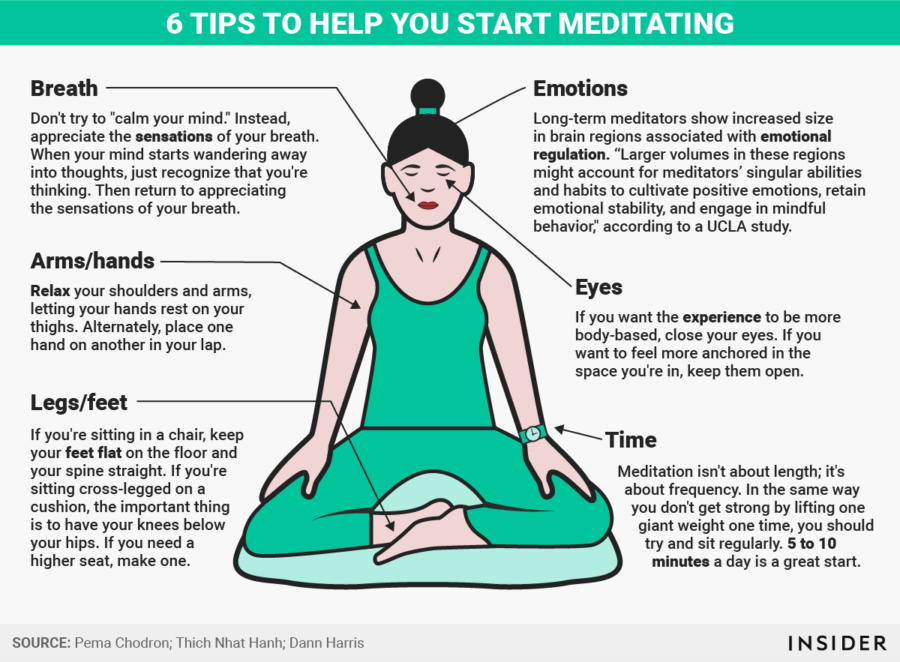Mindful meditation
December 15, 2017
About how much stress does the average high school student go through? According to USA Daily, “27% (of high school students) say that they experience ‘extreme stress’ during the school year, vs. 13% in the summer. And 34% expect stress to increase in the coming year.” This shows that stress feels like a normal part of students’ lives, because they experience it so regularly within their lives. However, for high school students, the amount of stress they must cope with increases every year due to extracurriculars, exams and college prep.
This is quite evident in the nervousness that students feel when they take tests or the lack of concentration during classes. For example, before finals students often stay up all hours of the night to try and cram as much knowledge as they can because they are scared to fail their test.
Although it may seem like a short term effect and not much of a problem, it may have dire consequences for the long run as prolonged stress leads to extreme fatigue and in worse case scenarios: depression. Walking through a high school, many students openly complain about being depressed or tired all the time.
But now schools are determined to uplift students and provide support for coping with stress: enter mindful meditation.
“Mindful Meditation” a term coined by biologist John Kabat-Zinn refers to paying attention to one’s present self through the actions of meditation. As the term suggests, the practice consists of meditation, but it is meditation in which one is fully aware and solely focusing about himself and how he breathes. First, a quiet place is found to sit and concentrate. Then, the body’s posture remains straight and proper as the eyes close and the person heavily concentrates only on breathing. It is important that the breathing is done correctly with a slow and steady intake of air through the nose (not mouth) and the stomach expands with the intake of air. Then in the same study and slow pace, the air is let out through the mouth and the stomach is relaxed.
According to the Atlantic, Kabat-Zinn “formally brought mindfulness into a medical setting; he developed the Mindfulness-Based Reduction (MBSR) program, which used specific exercises to help patients dealing with chronic pain.”
Although initially used for medical therapeutic purposes, more and more schools are promoting the positive benefits of mindful meditation due to its effective results and calming impact on the students. Mindful meditation could be an extra ten minutes built into the schedule or a whole class period and once a day would be soothing for the rest of the day. Any little bit is good for the body.
By incorporating mindful meditation into education and the school schedules, educators will see improvement of the students concentration, levels motivation and ability to perform in the academic setting. Another benefit is that the meditation does not take long, nor does it require new materials or expenses. It is an efficient and healthy method for anyone to take the time to relieve himselves of stress or other distractions which may hinder him from doing his best.
The positive effects are evident according to the Harvard Health Blog’s Julie Corliss who says, “mindful meditation may ease anxiety and and mental stress.”
Therefore, the schools who are already incorporating this practice into their students’ daily activities made a logically beneficial choice for both their students and educators. Mindful meditation does not only help students and people of the academic society, but anyone who needs the moment to relieve themselves of stress or to clear his mind of complexity.































